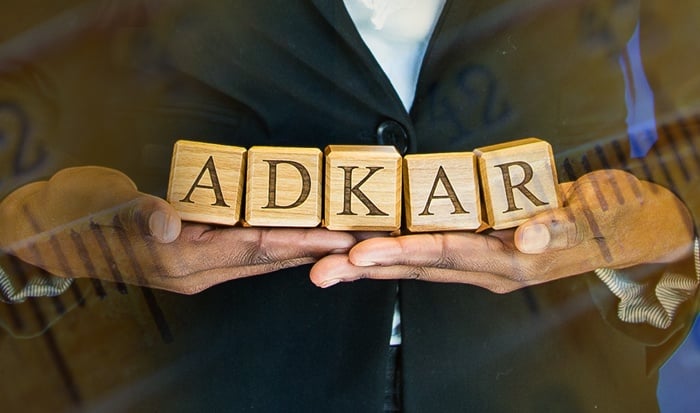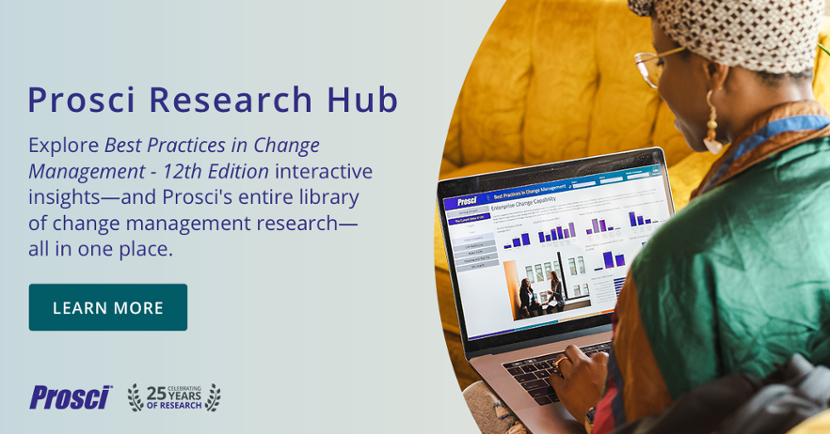Using the ADKAR Model to Measure Change Success

2 Mins
Updated: May 31, 2024
Published: October 25, 2017

Peter Drucker famously observed, “what gets measured gets managed.” But measurement can be an elusive frontier in the change management space. Fortunately, the Prosci ADKAR Model, with its individual and results orientation, offers unique value as a measurement mechanism.
Applications of ADKAR
In Prosci’s Applications of ADKAR research effort, change management practitioners shared their experience, insights and advice on using the ADKAR Model as a measurement framework. And, as it turns out, it works—two-thirds of participants using the model as a measurement framework said it was extremely effective. As one participant noted, “ADKAR allows you to measure where individuals are in the change process so change management activities can be tailored and timely.”
Get deep insights and data about applications of ADKAR, along with Prosci's entire research library,
when you subscribe to Research Hub.
Why We Need to Measure Change
Measurement of change is critical across the entire lifecycle of the project. Up front, establishing metrics for measurement set parameters for how we will know if we are making necessary progress. Initial measures also provide a baseline for understanding where we are starting.
During the middle of the effort, measuring change progress lets us know how we are doing, and perhaps more importantly, where we are struggling. When we measure, we can identify gaps. And once we’ve identified gaps, we can move to correct them.
Toward the end of the effort and into sustainment, measurement enables us to know if the change is sticking and if individuals have been successful in their own transition.
At the individual level, measurement of change is a critical component of reporting and dashboarding progress. The data can be used to inform and influence project teams and senior leaders. Measuring individual change can shed light on the critical importance of managing the people side of change to deliver results. Finally, measuring of change progress by stakeholders provides a mechanism for evaluating the effectiveness of change management work.
What the Research Says
Prosci’s Applications of ADKAR research effort explores seven uses of the ADKAR Model, one of which is as a measurement framework. The quotes below from study participants shed light on the applications of and results of the ADKAR Model to measure change progress.
“The individual assessment provided easily quantifiable and comparable data - baseline and progress measure - to guide change management efforts.”
“It makes it easier to move from measurement results to actions. If Knowledge and Ability are low, the issue is training--if Desire is low, training will not solve the problem.”
“The data collected from the survey results enable the change team to drill down further on specific gaps and or barriers.”
“Organized, summarized and reported the data to project sponsors and project team members. The data was then used to make adjustments to change management activities.”
The study includes additional insights into why participants used the ADKAR Model as a measurement framework, how it is used (including direction on who, when and how to measure), and the impact it has as a measurement mechanism. Check out our infographic to learn more.



